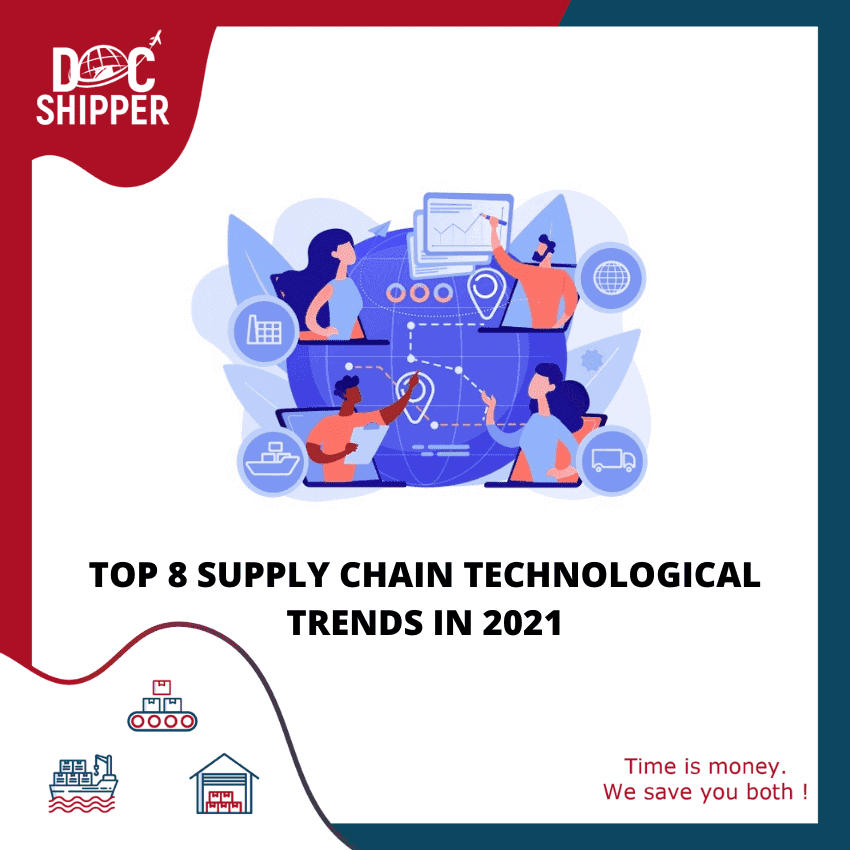Trends in 2023 for the logistics industry

In 2023, the logistics industry is experiencing a transformative wave of trends that are reshaping the way goods are transported, stored, and delivered.
Rapid advancements in technology, changing consumer preferences, and evolving global trade dynamics are driving these trends to propel the industry forward.
Logistics companies are adapting to meet the demands of an increasingly interconnected world where speed, efficiency, and sustainability are crucial for success.
These trends are not only shaping the present state of the logistics industry but also setting the stage for a future of enhanced connectivity, streamlined operations, and innovative solutions.
Let’s take a closer look at the trends within the logistics industry in 2023.
Automation and robotics in logistics
Automation and robotics have revolutionized various industries, and the logistics sector is no exception. From automated warehouses and robotic picking systems to the use of autonomous delivery vehicles, technology is reshaping logistics operations, driving enhanced efficiency and cost-effectiveness.
One key benefit of automation and robotics in logistics is increased productivity. Automated systems can handle repetitive tasks with greater speed and accuracy, minimizing human error and reducing processing times. This allows companies to streamline their operations, improve order fulfillment, and meet customer demands more effectively.
Sustainable logistics practices
As environmental concerns grow, sustainability has become a critical focus for the logistics industry. One significant trend in 2023 is the adoption of green logistics strategies. Companies are actively seeking ways to minimize their carbon footprint by optimizing route planning, consolidating shipments, and implementing energy-efficient practices. This includes using alternative fuels such as hybrid, hydrogen-powered, or electric trucks, as well as investing in renewable energy sources for warehouses and distribution centers.
Eco-friendly packaging solutions are also gaining traction. Businesses are exploring materials that are recyclable, biodegradable, or made from sustainable sources. By reducing packaging waste and using more environmentally friendly options, companies can contribute to a greener supply chain.
Data analytics and supply chain visibility
Data analytics and supply chain visibility have become indispensable tools for logistics professionals. The ability to gather and analyze vast amounts of information provides companies with valuable insights that can drive informed decision-making and optimize supply chain operations.
By leveraging advanced analytics technologies and supply chain management systems, businesses can gain real-time visibility into their operations. This enables them to track inventory levels, monitor demand patterns, identify bottlenecks, and make proactive adjustments to improve overall efficiency.
The advent of technologies like Internet of Things (IoT) devices, sensors, and artificial intelligence (AI) has further propelled the capabilities of data analytics in logistics. These technologies enable the collection of granular data points throughout the supply chain, allowing for more accurate demand forecasting, predictive maintenance, and optimized routing.
Last-mile delivery innovations
Last-mile delivery, which refers to the final leg of the logistics journey from the distribution center to the end customer, presents unique challenges and opportunities for innovation.
Crowdsourced delivery models have gained traction, leveraging the power of the sharing economy and utilizing local individuals to fulfill deliveries. This approach enables faster and more flexible delivery options, especially in urban areas.
Another key innovation in last-mile delivery is the integration of smart lockers and delivery hubs. These convenient pickup locations allow customers to retrieve their packages at a time that suits them best, reducing the need for multiple delivery attempts and minimizing the environmental impact of failed deliveries.


![Logistics Industry Analysis: Trends, Forecast [2023 - 2024]](https://docshipper.com/wp-content/uploads/2023/08/Hussein-FI-Wordpress-Sample-2.jpg)














